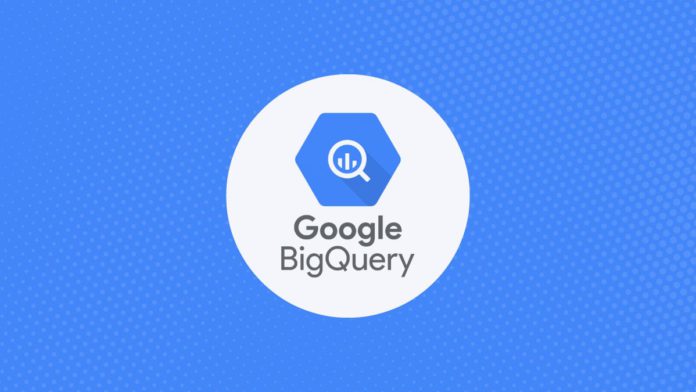Google BigQuery is a popular data warehousing solution used by many well-known companies, including Spotify, Ford Motors, and Wayfair. You can use it in your enterprise to efficiently manage large volumes of datasets and query them for complex analytics. Here, you will get a detailed overview of Google BigQuery, along with its important features, benefits, and limitations. Through this guide, you can adopt BigQuery for your business organization to better manage data workflows and increase profitability.
What is Google BigQuery?
Google BigQuery is a fully managed and cloud-hosted enterprise data warehouse. You can use it to store and analyze high-volume enterprise datasets on a petabyte scale and create reports to get useful business insights. With its serverless architecture, BigQuery simplifies infrastructure management. This allows you to develop robust software applications and focus on other critical business aspects.
To help you analyze diverse datasets, BigQuery supports several data types, including JSON, datetime, geography, numeric, and arrays. You can query these data types using SQL commands such as DISTINCT, GROUP BY, or ORDER BY. BigQuery also facilitates advanced data querying by allowing you to perform the join operations, including INNER, OUTER, FULL, and CROSS JOIN. Using joins, you can effectively combine data from multiple tables to analyze complex datasets.
BigQuery’s powerful analytical capabilities can be attributed to its architecture, which consists of two layers: storage and compute. The storage layer helps you ingest and store data, while the compute layer offers analytical capabilities. These two layers operate independently, making BigQuery a high-performing data warehouse with minimal downtime.
To enable you to leverage its robust architecture to query and manage data, BigQuery supports multiple interfaces, including the Google Cloud console and the BigQuery command-line tool. You can use client libraries with programming languages, including Python, Java, JavaScript, and Go, to interact with BigQuery. It also supports REST and RPC APIs along with ODBC and JDBC drivers to simplify interaction for data integration and analytics operations.
Key Features
BigQuery is an ideal solution for the storage and analysis of complex datasets. Here are some of its key features:
Multi-Cloud Functionality
BigQuery Omni is a cross-cloud analytics solution that allows you to analyze data stored in an Amazon S3 bucket or Azure Blob Storage without transferring data. For this, you can utilize BigLake external tables. It is a feature of BigQuery that enables you to connect to external storage systems and execute queries on data stored in these systems. If you want to consolidate across various clouds into BigQuery, you can do so using cross-cloud transfer operation.
Automated Data Transfer
You can use BigQuery Data Transfer Service (BQ TDS) to schedule data movement into BigQuery tables from specific source systems, including Amazon S3 and Redshift. Google Cloud Console, bq command-line tool, and BigQuery Data Transfer API are the tools through which you can access BigQuery Data Transfer Service. It automatically loads data into BigQuery regularly after configuration.
To avoid data loss, you can opt for data backfills. However, you cannot use BigQuery Data Transfer Service to export data from BigQuery to other data systems.
Free Trial
If you want to try BigQuery before investing money in it, you can utilize BigQuery sandbox. It is a free service that lets you use limited BigQuery features to know if they fit your data requirements. You do not need to provide credit card information or use a billing account to leverage the Google BigQuery sandbox.
The sandbox differs from the free tier, in which you have to provide your credit card information. You are given the same usage limit for the sandbox and free tier. However, you cannot use the streaming data feature, BigQuery Data Transfer Service and DML statements in sandbox.
Geospatial Analysis
You can easily analyze and visualize geospatial data in the BigQuery data warehouse as it supports geography data types. Currently, only the BigQuery client library for Python supports geography data types. For other client libraries, you can convert geography data types into strings using the ST_ASTEXT or ST_ASGEOJSON function. In addition, the geography functions useful for analyzing geographical data are available in GoogleSQL, an ANSI-compliant SQL used in Google Cloud.
Support for BI
The BigQuery BI engine is a fast, in-memory analysis service that supports SQL query caching. This facilitates quick query execution even in data visualization tools like Google Data Studio or Looker. You can use these tools to develop interactive dashboards and reports for business intelligence.
To enhance BI engine performance further, you can cluster and partition large BigQuery tables to query only relevant data. The BI engine also allows you to access materialized views, a database object where you can store the results of the query as a physical table for quick data retrieval.
ML Integration
You can easily create and deploy machine learning models using BigQuery ML. It also provides access to Vertex AI and Cloud AI APIs for performing NLP tasks like text generation and translation. As a result, you can leverage AI and ML while using BigQuery for use cases such as fraud detection or sales forecasting.
Advantages of Google BigQuery
BigQuery and its features simplify data processing and analytics, offering several benefits. Some advantages of using BigQuery include:
Serverless Architecture
BigQuery’s serverless architecture accelerates application development by facilitating underlying infrastructure management. This allows you to create web or mobile applications without worrying about resource provisioning, hardware maintenance, or software updates.
Scalability
You can query high-volume datasets on a petabyte scale using BigQuery. It also supports the automatic scaling of resources according to your data load, eliminating the need for manual configuration.
SQL Support
BigQuery supports GoogleSQL dialect and legacy SQL. GoogleSQL offers additional advantages over legacy SQL, such as automatic predict push down for JOIN operations and correlated subqueries. However, you can use legacy SQL if you want to use familiar SQL commands to perform data analysis.
Data Streaming
Datastream is a serverless change data capture (CDC) and replication service. You can use it to stream changes made at source databases such as Oracle or MySQL into BigQuery as the destination. This helps you to replicate data and analyze it in near real-time.
Data Security
You can set up identity and access management (IAM), column-level, and row-level access controls to ensure data security in BigQuery. It also supports data masking and encryption to help you protect your data from breaches or cyber attacks. BigQuery also complies with data protection regulatory frameworks like GDPR and HIPAA.
Disadvantages of Google BigQuery
While BigQuery provides numerous advantages, it has a few limitations. Some disadvantages of BigQuery that you should consider before using it are:
Limited Integration
BigQuery can be efficiently integrated with other GCP services, such as Google Sheets, Data Studio, or Google Cloud AI platform. However, you may find it challenging to use BigQuery with non-GCP services. As a result, to use BigQuery effectively for various use cases, you need to understand the functioning of other GCP services beforehand.
Quota Restrictions
Google Cloud provides various quotas to help you optimize resource usage. For instance, if the locations of the BigQuery query processing and Cloud SQL instance are different, the query is considered cross-region. You can only run up to 1 TB of cross-region queries daily.
Similarly, you can transfer up to 1 TB of data from different clouds, such as Amazon S3 bucket or Azure Blob Storage. Such limitations can slow down your routine data-related tasks.
Complexity
You may find using BigQuery complex if you are not extensively familiar with data warehousing techniques and SQL programming. You also need to gain basic technical expertise to use features such as clustering or partitioning. This can be time-consuming and can reduce your productivity and your organization’s operational efficiency.
Use Cases of Google BigQuery
Google BigQuery is a versatile data warehouse used for diverse purposes across various industries. Some of its use cases are:
Conducting Big Data Analytics
The ability to handle petabyte-scale data makes BigQuery a suitable data warehouse for storing big data. You can query this data using SQL commands and perform advanced analytics in various sectors, including finance and healthcare.
Performing Business Intelligence Operations
Integrating data stored in BigQuery with BI tools like Google Data Studio, Looker, or Tableau can help you produce interactive dashboards and business reports. You can then analyze the outcomes of these dashboards and reports to develop effective marketing, sales, or customer relationship management strategies.
Developing ML Models
You can use the data stored in BigQuery with services offered by Google Cloud AI and BigQuery ML to develop machine learning models. These models can be useful for performing predictive data analytics during forecasting, anomaly detection, and personalized product recommendations.
Building Location-based Software Applications
BigQuery supports geography data types, which enables you to perform geospatial analysis. As a result, you can use BigQuery to store data while developing location-based software applications for navigation, delivery services, or cab services.
Conclusion
Google BigQuery is a robust data warehouse that helps you with efficient data storage and advanced analytics. This blog helps you comprehensively understand BigQuery, its key features, advantages, and challenges. This information can help you use BigQuery for various cases, such as big data analytics or business intelligence in your industrial domain. You can then make well-informed decisions using the analysis outcomes to gain an advantage over your competitors.
FAQs
Why BigQuery is PaaS and Snowflake is SaaS?
Google BigQuery and Snowflake are both cloud-based data warehousing solutions. However, BigQuery is a Platform-as-a-Service (PaaS) solution, as it is a native Google Cloud Platform (GCP) data warehouse. You can run BigQuery only on GCP and not on any other platform. On the other hand, Snowflake is a Software-as-a-Service (SaaS) solution that you can run on different cloud providers such as GCP, AWS, and Azure.
Is BigQuery free?
No, BigQuery is not completely free, but it offers a free usage tier in which you can utilize some resources for free up to a particular limit. The pricing structure of BigQuery has two components: storage and compute. Storage pricing involves the cost of storing data, and compute pricing involves the cost of processing queries. In the free tier, BigQuery allows you to store up to 10 GiB of data and process 1 TiB of queries for free every month.


